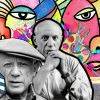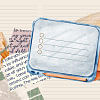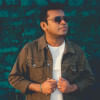AI-generated imagery: Democratising art or demolishing aspirations?

The limitations of artificial intelligence seem to be disappearing right before our eyes. What started as a tool to automate arduous labour seems to have edged into sci-fi territory, except it has permeated through the silver screen and surpassed the realm of fiction. Ideas that would take hours to execute and years of craftsmanship to master are being condensed by a computer to mere minutes. With the launch of Dall-E and Midjourney, what we know about creativity and AI has changed by leaps and bounds.
According to OpenAI, the developers of Dall-E, the gist is that it "starts with a bag of dots and fills in a pattern with greater and greater detail." The process is vastly different from what artists practice. This begs the question: if the process of creating is snatched away, can it still really be considered an "art piece"? The intent behind what is being created is significant. It is the amalgamation of many artistic techniques, expertly crafted to send a message that makes art. Yet, AI seems to have no problem replicating such artistic feats.
Tamzid Farhan Mogno, architect and motion designer, reflects on the value of sentiment in art, "I think the most valuable aspect of art is human emotion. We've seen a rise of procedurally generated art mass produced for selling such as NFTs. These quickly become soulless trends and lose value very fast as the novelty fades away."

He continues, "There are online marketplaces for selling prompts, like promptbase.com, which is absurd and logical at the same time since Dall-E now charges money for generating images for every single prompt. You may find an already generated Dall-E image on that marketplace that matches your style and spend money to find out the keywords used on that prompt. This knowledge of 'prompt engineering' is now becoming somewhat of an expertise for Dall-E users."
While almost anyone can write down a prompt and have the tool conjure up images, those with technical expertise and knowledge of art history will have an upper hand. The conversation then shifts to ownership laws and copyright issues. With questions arising primarily about the intellectual property of the generated image. In the case of Dall-E, they have recently given full copyright to individual users.
Junaid Iqbal Ishmam, Animator at Mighty Punch Studios, says, "One cannot claim the images generated by the AI as their own. Instead, they can take ownership of the idea. The way I view it, when a comic gets published, the story belongs to the author and the credit of the artwork goes to the artist."
For the time being, neither Dall-E nor Midjourney creates images that can be used commercially. Both manufacture results that still conform to the uncanny valley theory. Some close inspection reveals underlying flaws in the output. The AI cannot get text right, the fingers look jagged, and most conspicuously, it doesn't bode well with positions mentioned in the prompt. But with research progressing at an unprecedented rate, such shortcomings will inevitably be fixed.
Asifur Rahman, concept and comic book artist, dwells on the limitations of AI-generated images, "The ability to produce new images depends on existing libraries of other artists, which is indicative that these tools are devoid of independent thought."
Nevertheless, it has sparked discussion about how AI can aid artists in their workflow, by helping to brainstorm ideas, create reference images, or visualise products. Tamzid believes the real power of these AI tools is the almost infinite possibility of never-before-seen images that can be produced with terrifying speed.

Asif adds, "I have personally used AI tools to speed up my workflow and come up with rough blockings for my paintings. I think most of AI usage will be in conceptualising and brainstorming rather than creating finished pieces."
As harrowing as this tool is, artists are here to stay. Whether they use it to enhance their work is up to them but given the time and resources, a human who has devoted years to perfecting their skills will create something superior to Dall-E or Midjourney.
Junaid reaffirms that artwork created by people will always have demand. He claims, "AI-generated art could become its own genre or a medium. To generate a well-composed piece, one must have a grasp of fundamental basics of art, for which, we will still require artists."
There are, of course, ethical implications of the tool. The data that Dall-E and Midnourney draw from has an inclination for Eurocentric standards and perpetuates dated biases. an earlier study of Dall-E generated images of exclusively white men when it was prompted with "CEO".
With each new piece of technology that has been introduced to artists, they have coped. This tool is a testament to the fact that human creativity knows no bounds. Without the labour of the many engineers who have created this, and the artists who contributed data, such an achievement could not even be envisioned.

Asif draws parallels between the visual arts and music. He says, "Voice synthesisers and auto-tune tools have been available for years and it has to a certain degree, democratised music. But only a handful of people know how to utilise such tools to their full potential. More people are making music with ease but that doesn't mean musical knowledge and devotion have become irrelevant."
"Just a decade ago most of us were just consumers on the internet. Now everyone has the access to create their content and publish them. That didn't collapse the film and video industry. Similarly, the new ability to create nuanced images by anyone, won't take away the value of the creativity to make something out of those images," Tamzid concludes.
Abir Hossain has failed enough captcha tests to be classified as a robot. Remind him what traffic lights look like at [email protected]

 For all latest news, follow The Daily Star's Google News channel.
For all latest news, follow The Daily Star's Google News channel. 










Comments